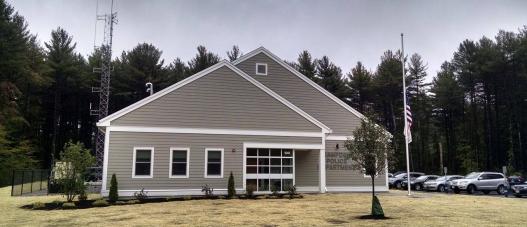Major Areas
House Hold Areas
Runoff of polluted Stormwater can result in major problems. These problems affect animal and plant life and habitat. These can also affect activities such as fishing and swimming.
- Known Pollutants
- Engine liquids (Oil, antifreeze, etc)
- Paint
- Cooking grease
- Laundry detergent
- Pet/Yard Waste
- Pesticides / Fertilizers
- Sediments
How Stormwater control helps the Hampden?
- Maintain clean water supplies
- Maintain clean wells and natural water aquifers
- Maintain accordance with state and federal mandates
- Maintain enforcement of by-laws for future compliance by monitoring and inspection
The Town of Hampden regulates stormwater discharges under different town by-laws. Non-stormwater discharges contain contaminants and supply additional flows to the Town storm drain system. Non storm drain discharges are a major cause of impairment of water quality and water flow (in lakes, ponds, streams, rivers, wetlands and groundwater), contamination of drinking water supplies, alteration or destruction of aquatic and wildlife habitat, and flooding. These can be prevented through the use of this by-law.
Construction Areas
Runoff of polluted Stormwater can result in major problems. These problems affect animal and plant life and habitat. These can also affect activities such as fishing and swimming.
Construction activities can have a significant impact on water quality. As stormwater flows over a construction site, it can carry pollutants such as sediment, debris, and chemicals into the drains causing damage to wildlife and water quality. Construction equipment can track dirt and debris onto roads, which may then be washed into the drain.
All construction sites require a permit at either the local, state or federal level. You should contact the town all before undertaking any construction project to make sure you are in accordance.
Erosion and Sediment Control (ESC)
The Town may require ESC and/or Stormwater management plan as part of this process of obtaining a building permit. Please contact the Building Department or DPW/Engineering for additional information.
Soil erosion is typically caused by water falling on disturbed ground which is poorly covered or unvegetated areas. Water can pick up soil particles in these areas and carry them towards water bodies or storm drains.
Suggested Erosion and Sediment Control BMPs:
- Drop Inlet Protection
- Silt Fence
- Hay Bales
- Gravel Construction Entrances
- Containment Areas for Concrete Equipment Washouts
- Perimeter Erosion and Sediment Control Practices
- Protected Material Stockpiles
- Maintain Control Practices
The Town of Hampden regulates stormwater discharges under different town by-laws. Non-stormwater discharges contain contaminants and supply additional flows to the Town storm drain system. Non storm drain discharges are a major cause of impairment of water quality and water flow (in lakes, ponds, streams, rivers, wetlands and groundwater), contamination of drinking water supplies, alteration or destruction of aquatic and wildlife habitat, and flooding. These can be prevented through the use of this by-law.
Commercial Areas
Runoff of polluted Stormwater can result in major problems. These problems affect animal and plant life and habitat. These can also affect activities such as fishing and swimming.
Oil, debris and sand that accumulate in parking lots can be washed into the storm system and later into natural water reservoirs. This is especially the case after winters where sanding parking lots occurs.
Responsibilities of the commercial owner:
- Clean up debris from driveways, parking lots, etc
- Cover dumpster and utility storage areas
- Clean all known spills immediately
The Town of Hampden regulates stormwater discharges under different town by-laws. Non-stormwater discharges contain contaminants and supply additional flows to the Town storm drain system. Non storm drain discharges are a major cause of impairment of water quality and water flow (in lakes, ponds, streams, rivers, wetlands and groundwater), contamination of drinking water supplies, alteration or destruction of aquatic and wildlife habitat, and flooding. These can be prevented through the use of this by-law.


